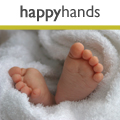Vital first aid tips for Fireworks
Health
Vital first aid tips for Fireworks
This time of year can be magical for little ones when they are allowed out after dark to watch the Fireworks on Bonfire Night. However please remember that it is an Autumn evening and a bit of preparation can help to ensure the evening is memorable for all the right reasons.
If you are planning to let off fireworks at home you should have an appropriately stocked first aid kit, a bucket of sand and plenty of water, a fire blanket and a bottle of sterile saline to irritated eyes.
The safest way to enjoy Fireworks is to go to a properly organised display, however if you're buying fireworks to use at home, check the fireworks conform to British Standards and only set fireworks off in your garden if you've got enough space.
Sparklers
Sparklers can be great fun, but they burn fiercely and are not suitable for children under the age of five years old. They can get six times as hot as a pan of cooking oil or as hot as a welder’s torch. Light sparklers one at a time and always wear gloves!
Always supervise children with sparklers and ensure that they stand still, away from other people. Have a bucket of sand to put used sparklers into and ensure no one picks them up until they have properly cooled. However careful you are, injuries can happen and here is how to treat some of the more common ones:
Minor burns
- Hold the affected area under cold, running water for at least 10 minutes.
- Cool the burn and keep the person warm - look out for signs of shock.
- If a child is burnt and the area is blistered and larger than a 50p piece, you should phone for an ambulance.
- Once the burn has been cooled for at least 15 minutes, the burn can be covered with cling film or inserted into a sterile plastic bag if appropriate - alternatively keep running it under water until the ambulance arrives.

If clothing is on fire
- Remember : STOP, DROP, WRAP and ROLL!!
- Stop the casualty panicking or running - any movement or breeze will fan the flames.
- Drop the casualty to the ground and wrap them in a blanket, coat, or rug. Ensure they are made from inflammable fabrics such as wool.
- Roll the casualty along the ground until the flames have been smothered.
Severe burns
If clothing has caught fire it is more than likely that the burn will be severe. A severe burn is deep and may not hurt as much as a minor one due to damaged nerve endings.
- Start cooling the burn immediately under cool running water for at least 10 minutes. Use a shower if the burns are large. Keep cooling the burn while waiting for professional help to arrive. Ensure you are cooling the burn and not the casualty, keep areas that are not burnt as warm and dry as possible to try and avoid the casualty going into shock.
- Instruct a helper to dial 999 or 112 for an ambulance.
- Make the casualty as comfortable as possible, ideally lie them down and elevate their legs, to reduce the risk of clinical shock.
- Whilst cooling, remove any constricting items such as jewellery or clothing from the affected area unless they are stuck to the burn - wear disposable gloves if they are available.
Remember to NEVER
- Touch the burn
- Use lotions, ointments or creams
- Use adhesive dressings
- Break blisters
Eye injuries
Fireworks and bonfires release sparks and debris, which can land in the eye and be painful. Wash your hands and carefully open the casualty’s eye looking in particular for any embedded object. If there is anything lodged in the eye, cover both eyes and phone for an ambulance. If you can see the object in the eye and it is moving freely, use a sterile eye wash and gently irrigate the eye to remove it. If the casualty is still in pain, or discomfort, seek medical advice.
Have a wonderful Bonfire Night - enjoy the celebrations and please stay safe!
If you are unsure of what to do in a medical emergency please book onto a First Aid course or you can brush up on essentials with an online course from www.onlinefirstaid.com, emma@firstaidforlife.org.uk or call 020 8675 4036 for more information.
First Aid for life provides this information for guidance and it is not in any way a substitute for medical advice. First Aid for Life is not responsible or liable for any diagnosis made, or actions taken based on this information.
Related Articles
Dragons launches new nursery fabrics
First Aid training - Why knowing what to do is so important
Preventing and treating poisining with First Aid For Life
Crash Course in A & E Paediatric First Aid for Parents
Firework Advice and First Aid tips should something go wrong
A bright Montessori future in Brooke Green
Helmets - can they really save lives?
What we all should know about Asthma
Why first aid skills are important for older children and teenagers
What to do when a child is choking
Halloween and Bonfire Night First Aid Tips
Related Products
Have Your Say
Be the first person to comment on this article, just post a comment below.





In order to post a comment you need to be a member. Join Now | Sign in